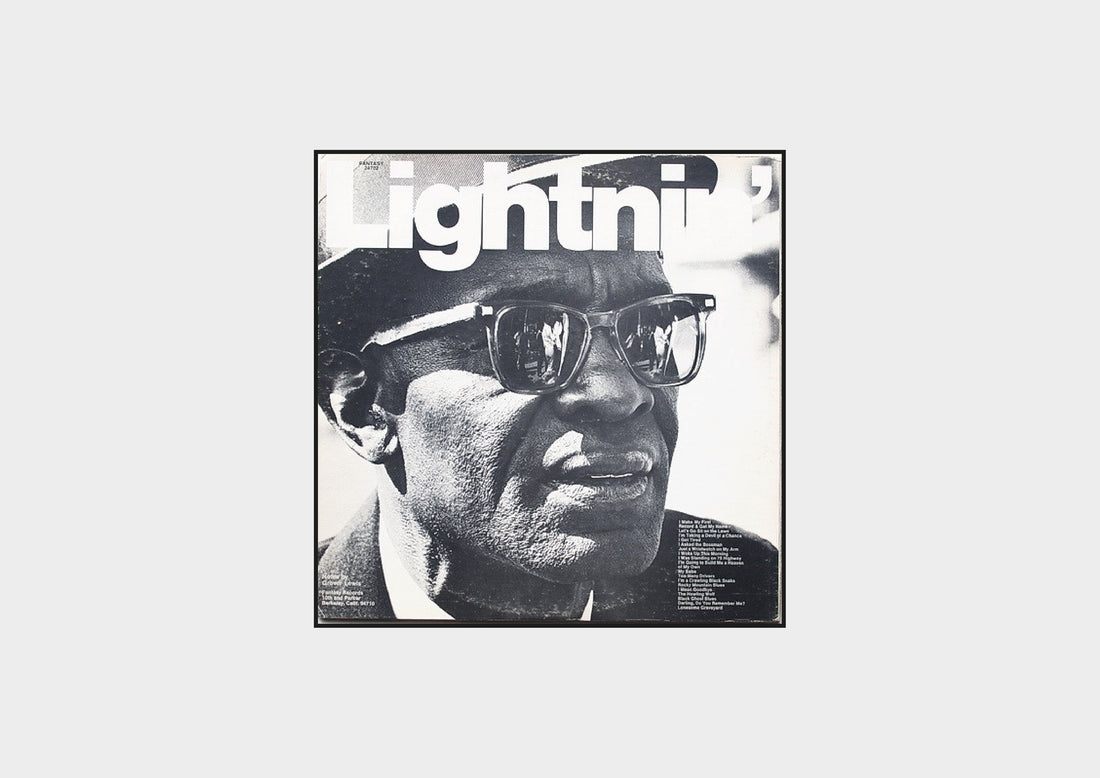
Lightnin' Hopkins and the Texas Blues
This season’s collection of graphic tees and sweats pay homage to something very close to Stan Ray—the Texas blues and the music of Lightnin’ Hopkins. Here’s the story behind it…

The history books might say the blues were born on the Mississippi Delta, but ask a Texan their thoughts on the subject and they’ll probably tell you something a little different. Or as Blind Lemon Jefferson put it, “The blues came from Texas, loping like a mule.”
Emanating from oil fields, lumber yards and bustling street corners, an alternative strain of the blues grew out of the Lone Star State in the early 20th century, as African Americans transformed spirituals, work songs and field hollers into a unique take on the twelve-bar blues.
The Texas blues were defined almost by lack of strict definition, with the huge size of the state and its diverse culture creating a vast fusion of styles and sounds that borrowed from Cajuns, cowboys and the Caribbean, along with folk ballads and East European polka. That said—it was still most definitely, undeniably ‘the blues’—short, sharp stories of blue collar life (and death).
Sort of like with hip hop and the endless discussion between East and West Coast, this music didn’t exist in a vacuum—with Texas blues and Delta blues both building off each other. For example, one of the oldest known blues songs—an ode to Texas city life called ‘Dallas Blues’—was immensely popular and relentlessly covered along the Mississippi, whilst the only known recordings of Robert Johnson (the legendary Delta bluesman who sold his soul to the devil in return for his guitar skills) were laid down in Texas.
Lightnin’ Hopkins is perhaps one of the most notorious proponents of Texas blues. Born in 1912 on a farm just west of Crockett, the small crossroads city where Stan Ray still makes a good chunk of its trousers, Samuel John Hopkins was maybe destined to become blues royalty.
At just eight years old he met the legendary godfather of Texas blues, Blind Lemon Jefferson at a church picnic—and it wasn’t long before he was playing alongside the guitarist at church gatherings—quickly picking up the tricks of the trade before going it alone, zig zagging across Texas, guitar in hand.

With his unique sound which combined Jefferson’s stripped-back style with a streak of self-deprecating humour, Hopkins could be heard everywhere from gin joints to city buses as he travelled from town to town in search of a paying crowd. Like his mentor, Hopkins was a proficient recording artist—and whilst some of the earlier blues artists might have played their whole life with barely a 78 single to show for it, it’s thought that he laid down somewhere between 800 and 1000 tracks in his lifetime.
By the ‘40s he’d had a string of records on local labels like Aladdin and Gold Star, although by the 50s his rootsy songs of country hardships were seen as quaint and old fashioned in comparison to the glitz and shine of modern rock ‘n’ roll. But then, just when it seemed like the blues was falling out of favour—the scales tipped. As people became bored of the bubblegum, the folk revival of the early 60s sent young listeners in search of raw and authentic sounds—and a new batch of labels sprung up to seek out honest and original music.
Arhoolie Records was one such label—cutting definitive recordings of Hopkins along with other Texas blues mainstays like Mance Lipscomb, ‘Black Ace’ Turner and Melvin ‘Little Sun’ Jackson. Although based in San Francisco, Arhoolie played a key part in the preservation of the Texas blues, bringing the music to a wider audience and elevating the artists to legend status, pitching them as no nonsense relics of a tougher age—the real deal in the face of modern commercialism.

The fact Hopkins was still around helped too—and unlike the countless cult artists who don’t live to see their success, he could actually enjoy his newfound appreciation—going from playing on street corners to Japanese concert halls. That said, he always stayed true to his Texas roots—and like Stan Ray, he can still be found in Crockett—where his statue sits, guitar in hand, just across the road from the bar he used to play 70 years ago.
Words by Sam Waller.